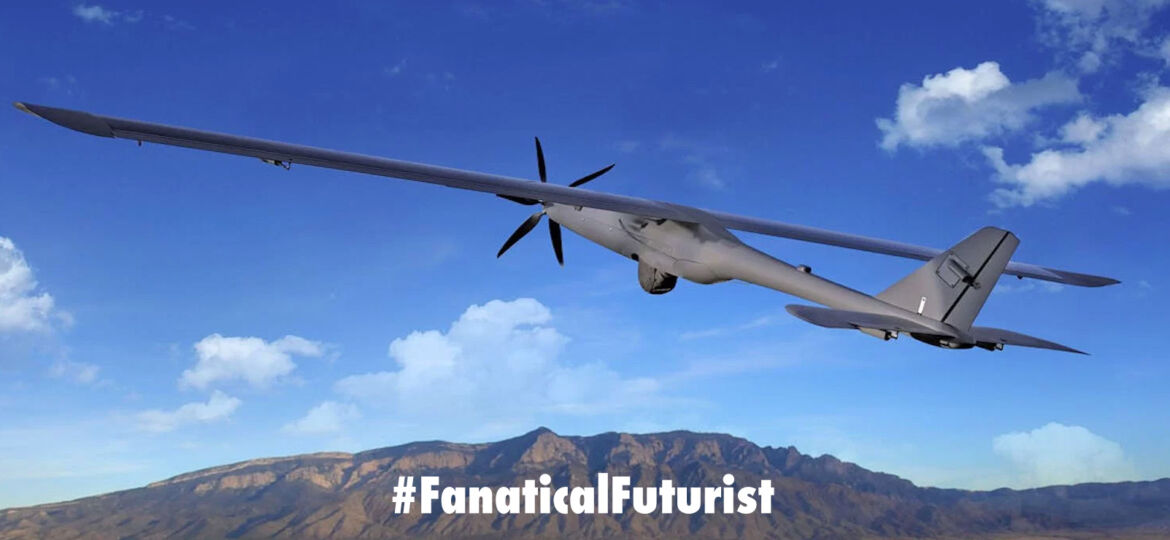
WHY THIS MATTERS IN BRIEF
As more companies field drones one of their biggest hurdles is keeping them airborne for long periods of time, DARPA’s latest program hopes to solve that.
DARPA, the bleeding edge research arm of the US Military that’s bought and bringing you everything from conscious robots and autonomous warships, to uploading knowledge to your brain sci-fi style, and new ways to monitor the whole world, turn sea creatures into giant sensor networks while bringing crops back from the dead, have announced they’ve finally chosen a drone for their latest project – charging drones and aircraft in midair using nothing more than laser beams. And they say that the concept could one day lead to unmanned planes that stay aloft indefinitely.
Unveiling their newest trick the team from the Defense Advanced Research Projects Agency said their laser powered flying drones have solar panels in the wings, particularly their dorsal wings, and batteries in the fuselage, and while the batteries provide the initial source of power as they drain down the drone operators can aim a laser beam at the solar panels to re-charge them. And the more times they hit the wings with laser shots the faster the drones can re-charge, to the point where they can stay aloft indefinitely.

Courtesy: Silent Falcon
DARPA’s program is called the Stand-off Ubiquitous Power/Energy Replenishment – Power Beaming Demo (SUPER PBD), and the agency announced they’ve chosen Silent Falcon’s eponymous drone for their testing. DARPA will try out the concept by flying the Silent Falcon and shooting a laser down at it from a mountainside in the coming months.
The ability to recharge a drone with lasers does face some hurdles though. For one, lasers lose strength the farther they travel and can be obscured or even blocked by smoke, haze, fog, and rain, but DARPA figures it can recharge the drone at up to 6.8 miles, but that maximum will vary under real-world conditions. The team also acknowledges there are safety issues with shooting a laser up into the air, which is why, for the test, they’re placing the laser on a hill and pointing downward, although they didn’t say whether a drone re-charging laser could start a wildfire during the recharging process, which is something I’m guessing they might want to look into…
Nevertheless, if DARPA and Silent Falcon can prove this concept works, they could open the door to even longer range drones operating in both the commercial and military sectors, which ultimately means that drones could fly for weeks to fulfil their contract or mission, and not land until the job is done.
















